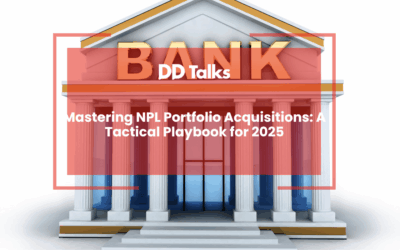Table of Contents
- Understanding Restructuring and Distressed Investing: Key Concepts and Definitions
- The Process of Distressed Restructuring: Steps and Strategies for Success
- Identifying Distressed Investments: Criteria and Characteristics to Watch For
- Examples of Distressed Debt Investing: Real-World Case Studies and Insights
- Integrating Distressed Assets into Your Portfolio Management Strategy
- Navigating Challenges in Distressed Investments and Corporate Restructuring
Understanding Restructuring and Distressed Investing: Key Concepts and Definitions
Restructuring and distressed investing are pivotal components of the financial landscape, particularly in the European debt and equity markets. Restructuring refers to the process by which a company reorganizes its structure, operations, or finances to improve efficiency or address financial challenges. Distressed investing, on the other hand, involves purchasing securities of companies that are experiencing financial instability or bankruptcy.
The Process of Distressed Restructuring: Steps and Strategies for Success
The process of distressed restructuring is multifaceted, involving several critical steps:
- Assessment: Evaluating the company’s financial health and identifying underlying issues.
- Planning: Developing a comprehensive restructuring plan that addresses identified problems.
- Negotiation: Engaging with creditors, stakeholders, and investors to gain support for the plan.
- Implementation: Executing the restructuring plan through strategic changes in operations, finances, or governance.
- Monitoring: Continuously assessing progress and making adjustments as necessary.
Identifying Distressed Investments: Criteria and Characteristics to Watch For
Selecting promising distressed investments requires careful analysis. Key criteria include:
- Deteriorating Financials: Companies showing declining revenue, profits, or liquidity.
- High Debt Levels: Excessive leverage compared to industry norms.
- Poor Management Decisions: Strategic errors leading to operational inefficiencies.
- Market Positioning: Weak competitive position within their industry sector.
Examples of Distressed Debt Investing: Real-World Case Studies and Insights
Diving into real-world scenarios provides valuable insights into distressed debt investing. Consider these case studies:
A European Manufacturing Firm’s Turnaround
A prominent European manufacturing firm faced severe liquidity issues due to poor market conditions. Investors purchased its distressed debt at a discount. Through effective restructuring involving cost-cutting measures and strategic partnerships, the company regained stability, providing substantial returns to investors.
A Retail Chain’s Bankruptcy Recovery
An established retail chain declared bankruptcy following years of mismanagement. Distressed investors acquired its debt securities during liquidation proceedings. Post-restructuring involved streamlining operations and rebranding efforts which eventually led to a successful recovery phase benefiting all stakeholders involved.
For more in-depth analyses on similar topics, visit our main page at [DD Talks](https://ddtalks.com/).
Integrating Distressed Assets into Your Portfolio Management Strategy
Incorporating distressed assets into your portfolio requires a balanced approach:
- Diversification: Spread investments across various sectors to mitigate risk exposure from any single distressed asset failing.
- Tactical Allocation: Allocate a portion specifically towards high-risk/high-reward opportunities like distressed assets while maintaining overall portfolio balance.
- M&A Synergies: Leverage mergers & acquisitions (M&A) strategies where acquiring undervalued/distress firms can complement existing holdings within your portfolio structure.
Navigating Challenges in Distressed Investments and Corporate Restructuring
Successfully navigating challenges inherent within distress situations necessitates proactive risk management:
- Legal Complexities:
- Stakeholder Conflicts
- Market VolatilityIf not managed correctly could lead adverse outcomes impacting both short-term performance long-term viability respective portfolios dealing such scenarios effectively crucial ensuring sustainable success amidst turbulent economic environments globally today!
Frequently Asked Questions
What is restructuring in the context of financial markets?
Restructuring refers to the process by which a company reorganizes its structure, operations, or finances to improve efficiency or address financial challenges. This can involve changes in management, operational processes, or debt arrangements.
What does distressed investing entail?
Distressed investing involves purchasing securities of companies that are experiencing financial instability or bankruptcy. Investors aim to buy these securities at a discount and benefit from the potential recovery and turnaround of the company.
What are the key steps in the process of distressed restructuring?
The process of distressed restructuring includes several critical steps: Assessment, Planning, Negotiation, Implementation, and Monitoring. Each step is essential for successfully addressing the company’s financial issues and guiding it back to stability.
How can one identify promising distressed investments?
Identifying promising distressed investments requires careful analysis of several criteria including deteriorating financials, high debt levels, poor management decisions, and weak market positioning within their industry sector.
Can you provide examples of successful distressed debt investing?
Yes, real-world case studies such as a European manufacturing firm’s turnaround through effective restructuring and a retail chain’s bankruptcy recovery highlight how strategic investments in distressed assets can lead to substantial returns.




0 Comments